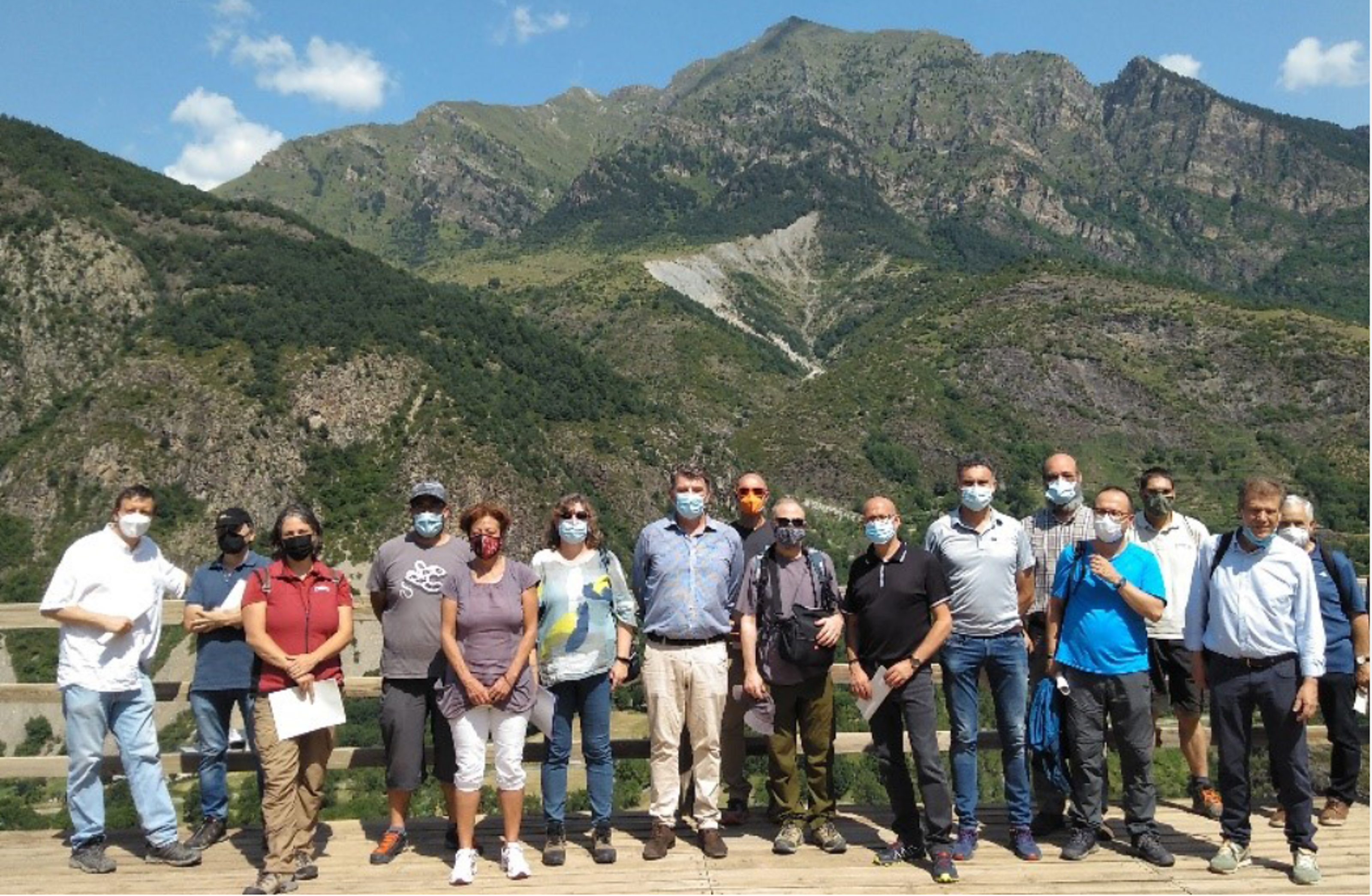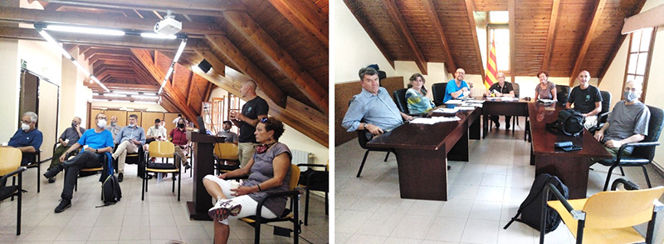Site visit to Erill la Vall, the Pyrenees

This NBS project, in Catalunya, Spain, is the last of the four sub-projects in the Pyrenees and was approved in June 2021. The planned NBS is for mitigating the risk posed by debris flows sourced by thick deposits of glacial till. On 21st July 2021, a meeting and site visit of PHUSICOS partners, promoters of the project and local experts took place at the Erill gully.
The aim of the planned NBS interventions is to reduce the risk of landslides during floods or heavy rainfall events that could affect the town of Erill la Vall. The main goal is to correct the problems of soil erosion and mobilization of materials (soil and rocks), which are generated in the Erill ravine, over an area of 25 ha. The mobilized material generates debris flows, which can reach the town center and peri-urban areas of Erill-la-Vall.

View from the top of the debris flow source area. The town of Erill la Vall in the distance (centre of the left photo). The source area for debris flows in the Erill ravine seen from a drone (right).
There is historic evidence that this is one of the most destructive potential risks that affect humans in this valley. From this year until the beginning of 2023, nature-based solutions (NBS) will be designed and implemented for stabilization of the till deposits to avoid recurrent debris flows reaching the urban area. The Erill ravine sub-project is carried out as part of the PHUSICOS project and is coordinated by the Working Community of the Pyrenees through the Pyrenean Climate Change Observatory.

The ideas behind the project were presented to the participants, including media (left). Meetings were held to discuss the solutions and the implementation of the interventions, as part of a Living Lab process (right).
The meeting and site visit was attended by 16 participants, including the mayor of Vall de Boí, Sònia Bruguera; the director of the Working Community of the Pyrenees, Jean-Louis Valls; and the director of the Oficina Catalana de Canvi Climàtic (OCCC), Salvador Samitier. In addition, 3 news media attended. One news article was presented, see the following link, https://www.viurealspirineus.cat/articulo/alta-ribagorca/barranc-d-erill-es-converteix-cas-d-estudi-projecte-europeu-phusicos/20210720120429027275.html.
A drone-video from the area has been made, which shows the erosion problem and potential for debris flows in the ravine.